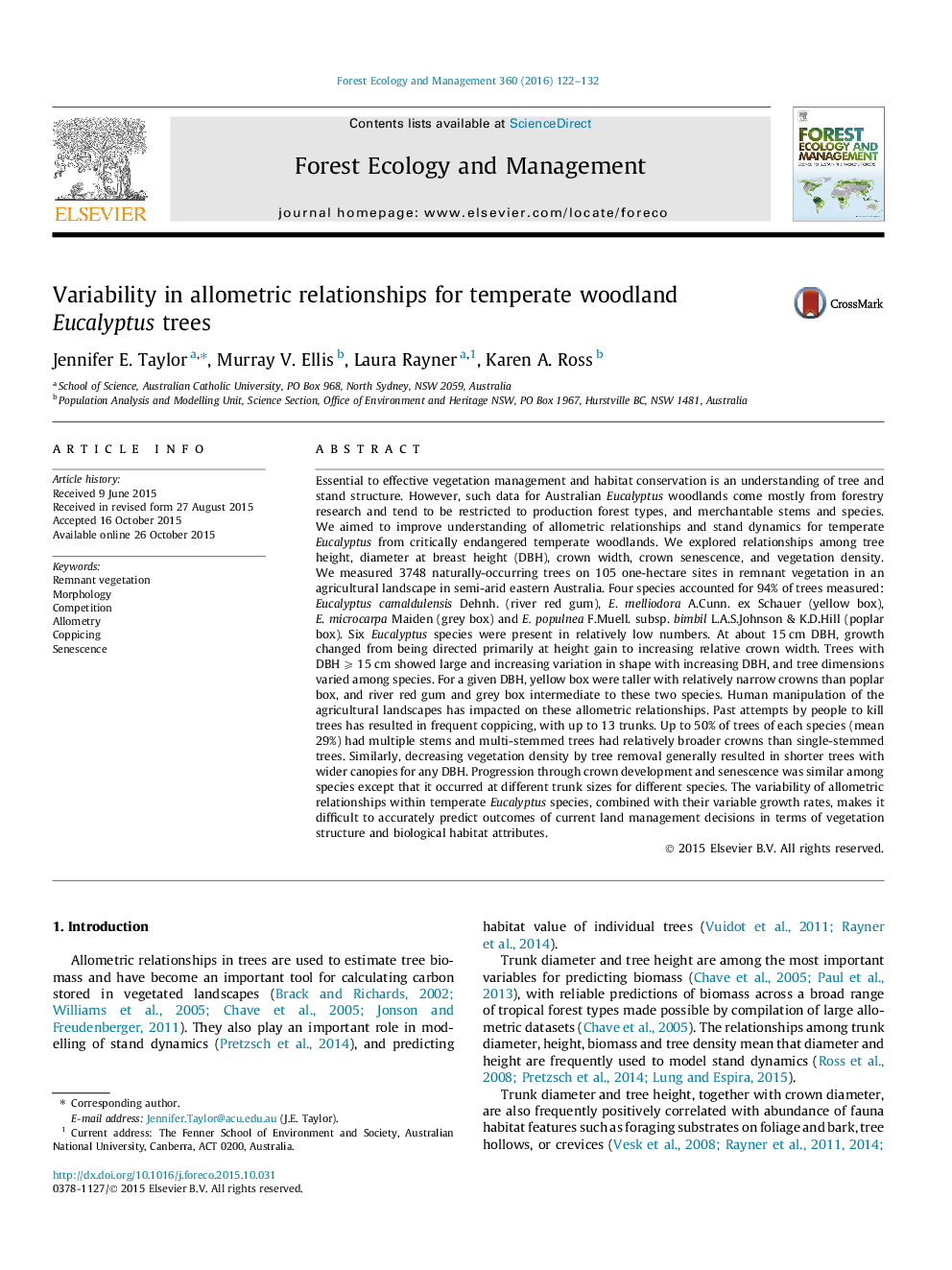| کد مقاله | کد نشریه | سال انتشار | مقاله انگلیسی | نسخه تمام متن |
|---|---|---|---|---|
| 6542542 | 159162 | 2016 | 11 صفحه PDF | دانلود رایگان |
عنوان انگلیسی مقاله ISI
Variability in allometric relationships for temperate woodland Eucalyptus trees
ترجمه فارسی عنوان
تنوع در روابط آلومتریک برای درختان معتدل درختان اوکالیپتوس
دانلود مقاله + سفارش ترجمه
دانلود مقاله ISI انگلیسی
رایگان برای ایرانیان
کلمات کلیدی
گیاه باقی مانده، مرفولوژی، رقابت، آلومتریوم، کپی رایت، زناشویی،
موضوعات مرتبط
علوم زیستی و بیوفناوری
علوم کشاورزی و بیولوژیک
بوم شناسی، تکامل، رفتار و سامانه شناسی
چکیده انگلیسی
Essential to effective vegetation management and habitat conservation is an understanding of tree and stand structure. However, such data for Australian Eucalyptus woodlands come mostly from forestry research and tend to be restricted to production forest types, and merchantable stems and species. We aimed to improve understanding of allometric relationships and stand dynamics for temperate Eucalyptus from critically endangered temperate woodlands. We explored relationships among tree height, diameter at breast height (DBH), crown width, crown senescence, and vegetation density. We measured 3748 naturally-occurring trees on 105 one-hectare sites in remnant vegetation in an agricultural landscape in semi-arid eastern Australia. Four species accounted for 94% of trees measured: Eucalyptus camaldulensis Dehnh. (river red gum), E. melliodora A.Cunn. ex Schauer (yellow box), E. microcarpa Maiden (grey box) and E. populnea F.Muell. subsp. bimbil L.A.S.Johnson & K.D.Hill (poplar box). Six Eucalyptus species were present in relatively low numbers. At about 15 cm DBH, growth changed from being directed primarily at height gain to increasing relative crown width. Trees with DBH ⩾ 15 cm showed large and increasing variation in shape with increasing DBH, and tree dimensions varied among species. For a given DBH, yellow box were taller with relatively narrow crowns than poplar box, and river red gum and grey box intermediate to these two species. Human manipulation of the agricultural landscapes has impacted on these allometric relationships. Past attempts by people to kill trees has resulted in frequent coppicing, with up to 13 trunks. Up to 50% of trees of each species (mean 29%) had multiple stems and multi-stemmed trees had relatively broader crowns than single-stemmed trees. Similarly, decreasing vegetation density by tree removal generally resulted in shorter trees with wider canopies for any DBH. Progression through crown development and senescence was similar among species except that it occurred at different trunk sizes for different species. The variability of allometric relationships within temperate Eucalyptus species, combined with their variable growth rates, makes it difficult to accurately predict outcomes of current land management decisions in terms of vegetation structure and biological habitat attributes.
ناشر
Database: Elsevier - ScienceDirect (ساینس دایرکت)
Journal: Forest Ecology and Management - Volume 360, 15 January 2016, Pages 122-132
Journal: Forest Ecology and Management - Volume 360, 15 January 2016, Pages 122-132
نویسندگان
Jennifer E. Taylor, Murray V. Ellis, Laura Rayner, Karen A. Ross,
